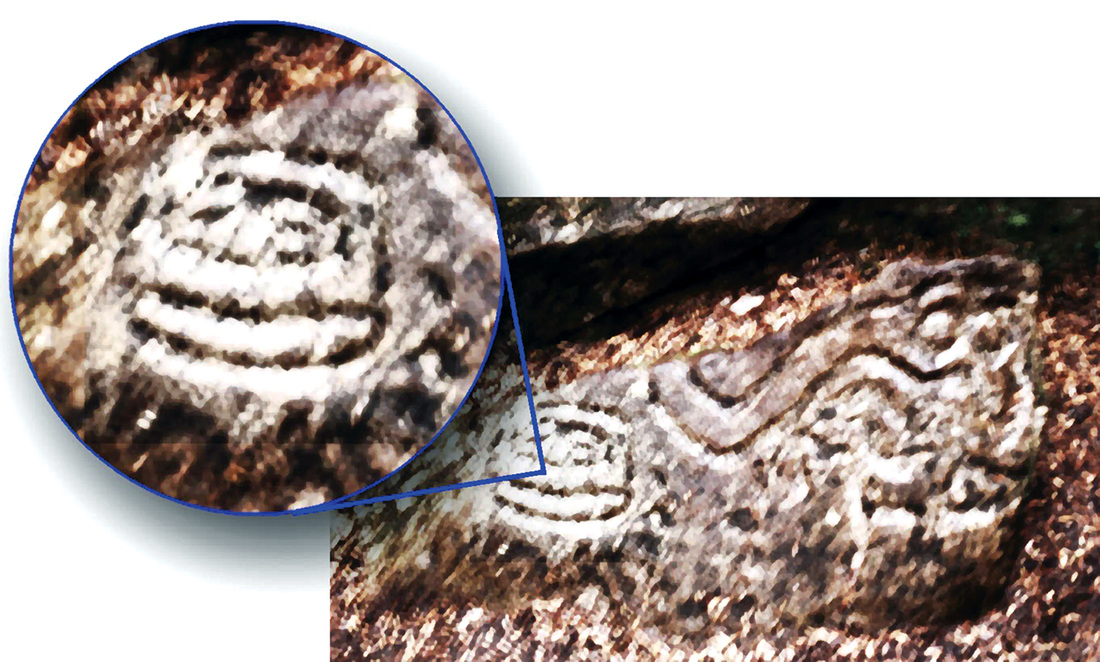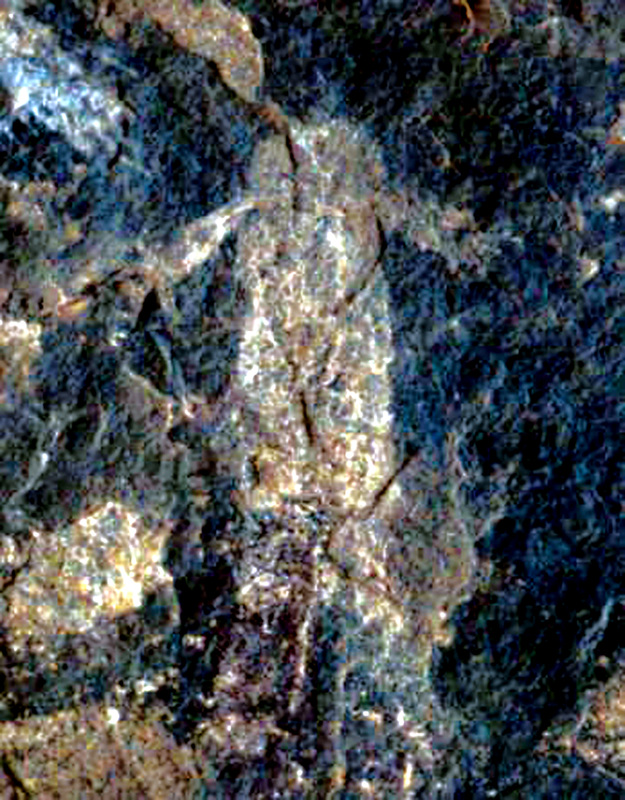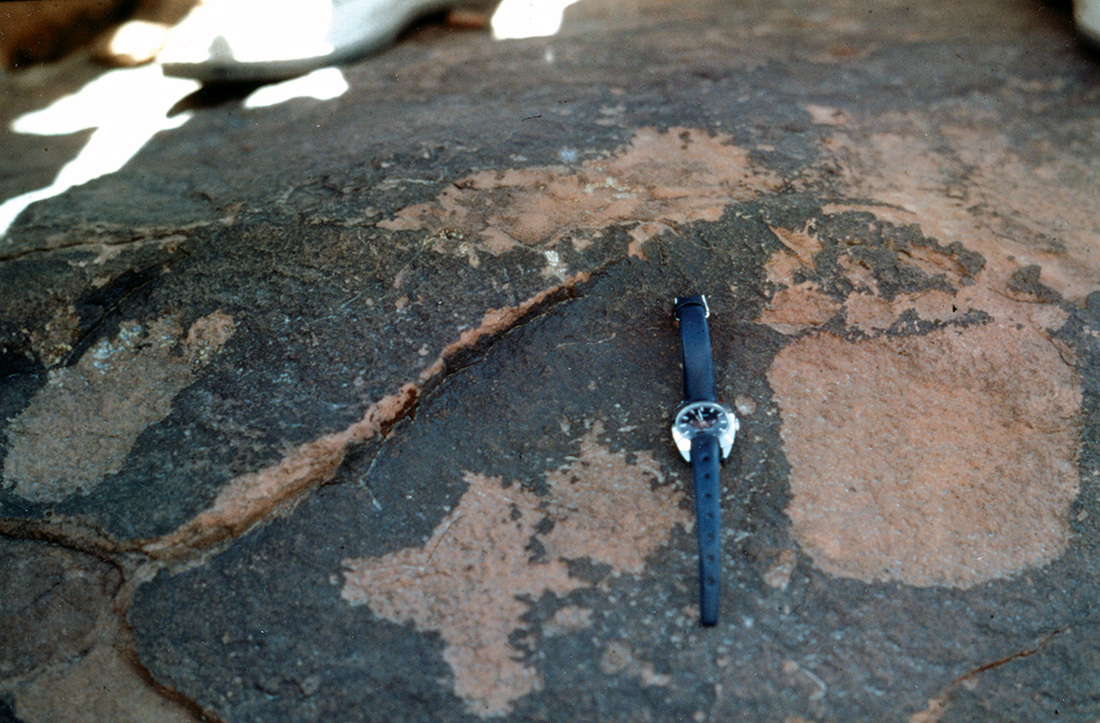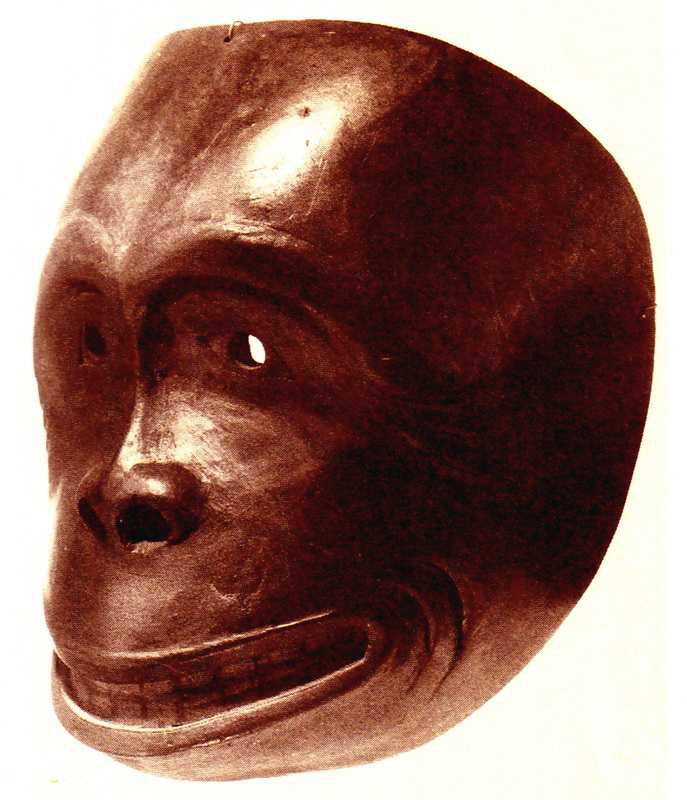FIRST NATIONS SASQUATCH REFERENCES GALLERY
|
Petroglyphs are engravings on rock
surfaces. They were painstakingly created by ancient people for communications, religious, and simple art-expression purposes. We can only guess at the meaning of some of the symbols used. Many animals depicted can be definitely identified, and of course humans are obvious. The petroglyph head seen on the left is in Bella Coola, BC, a prime area for sasquatch-related incidents. It does not appear to be a human head (there are also images of human heads and this head is totally different). It is somewhat similar to the stone heads which are thought to be sasquatch-related. |
|
A petroglyph in California that Native people say is the “hairy man.” Descriptions provided for the “hairy man” and a pictograph (rock painting--see First Nations Pictographs section) of the creature match the descriptions we have of the sasquatch.
|
These petroglyphs were found in New Mexico. The first photograph show the familiar “whistling lips” seen on “sasquatch” masks created by First Nations
people in British Columbia. Could it be that the images were created as a warning that the creature inhabited that region? The second photographs shows footprints. The print on the right is similar to the stone foot (see First Nations Stone Carvings section). |
|
Pictographs showing humans at the
same site as the “hairy man” image. A distinct difference is seen.Pictographs are paintings on rock faces.utilizing natural pigments. Ancient Native people created them for the same reasons they created petroglyphs (communications, religious, art-expression purposes). The most famous sasquatch-related pictographs are in central California. They depict what the Native people refer to as the “hairy man” along with with his mate (wife) and child. The “hairy man” seen here is about 8.5 feet tall. In addition to appearance similarities, Native stories of the “hairy man” provide several behaviors and characteristics that correspond with what we know about the sasquatch. There appears to be little doubt that, real or mythical, the hairy man and the Pictographs showing humans at the same site as the “hairy man” image. A distinct difference is seen. |
|
The information presented here was from research done by Kathy Moskowitz Strain, Forest Heritage Resource and Tribal Relations Program Manager for the Stanislaus National Forest, California. Kathy has authored a remarkable book on bigfoot in Native culture. She provides valuable insights on understanding Native traditions and values related to the sasquatch. |
|
A D’sonoqua mask (top) and a ‘buck’ was mask depicting what we have come to call a sasquatch.
|
Generally speaking, most wood carvings
(masks and totem poles) depicting the sasquatch are those of the Kwakiutl Tribe in British Columbia, Canada. The carvings depict either the female sasquatch which has long hair and whistling lips, or the male which has no hair and a straight, open mouth with exposed teeth. The female is called D’sonoqua (several spellings and a proper noun). The male is called a buck’ was, or just buckwas (not a proper noun). The interpretation is either “wild woman of the woods,” or “wild man of the woods,” as applicable.” An example of each mask is shown on the left. However, the most ape-like mask ever found was one created by a native of the the Tsimshian Tribe, also of British Columbia, as illustrated below. This mask was created in about 1850
and invites considerable speculation as to what inspired the artist to create it. Native people in British Columbia, (homeland of the sasquatch) appear to have created most of the wood carvings showing the sasquatch. Just how far they go back in history is difficult to determine, but definitely long before non-Native people took an interest in the creature. |
Gallery Navigation
All images in this presentation are from the Murphy/Hancock Photo Library or other restricted sources and are under copyright where applicable.
Please contact <[email protected]> for details on usage.


















